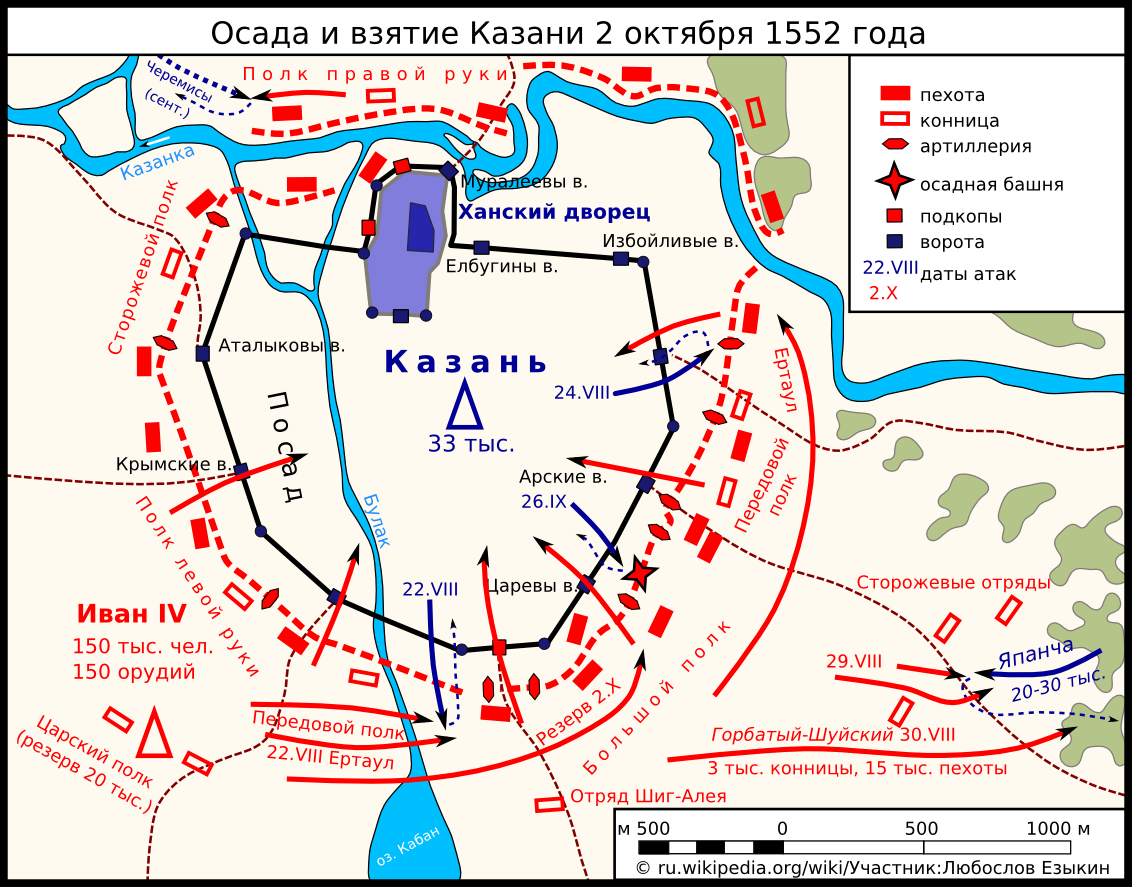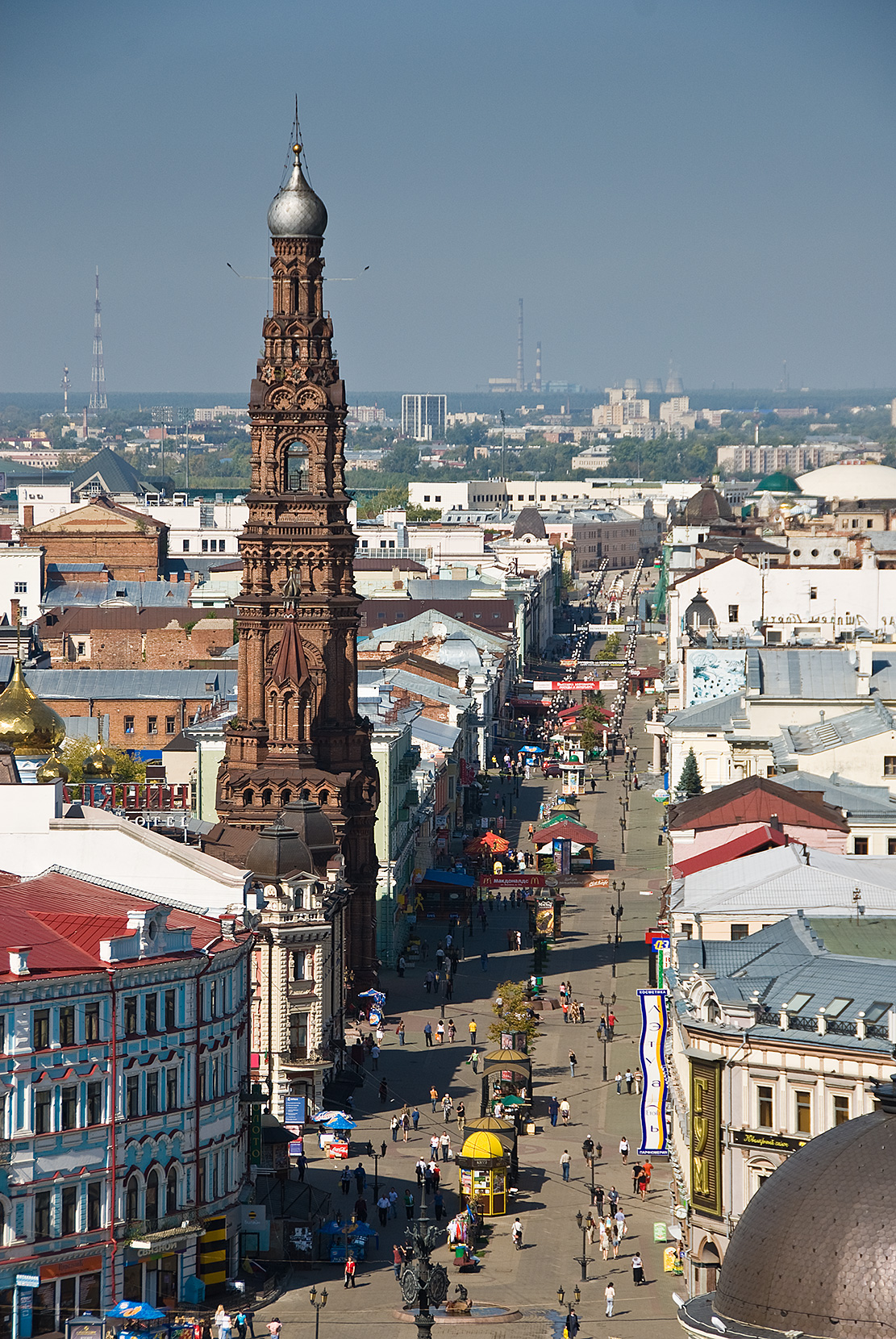|
Kazan
Kazan; , IPA: Help:IPA/Tatar, [qɑzan] is the largest city and capital city, capital of Tatarstan, Russia. The city lies at the confluence of the Volga and the Kazanka (river), Kazanka Rivers, covering an area of , with a population of over 1.3 million residents, and up to nearly 2 million residents in the greater Kazan metropolitan area, metropolitan area. Kazan is the List of cities and towns in Russia by population, fifth-largest city in Russia, being the Volga#Biggest cities on the shores of the Volga, most populous city on the Volga, as well as within the Volga Federal District. Historically, Kazan was the capital of the Khanate of Kazan, and was Siege of Kazan, conquered by Ivan the Terrible in the 16th century, at which point the city became a part of the Tsardom of Russia. The city was seized (and largely destroyed) during Pugachev's Rebellion (1773–1775), but was later rebuilt during the reign of Catherine the Great. In the following centuries, Kazan grew to become a ... [...More Info...] [...Related Items...] OR: [Wikipedia] [Google] [Baidu] |
Republic Of Tatarstan
Tatarstan, officially the Republic of Tatarstan, sometimes also called Tataria, is a Republics of Russia, republic of Russia located in Eastern Europe. It is a part of the Volga Federal District; and its capital city, capital and largest city is Kazan, an important cultural centre in Russia. The region's main source of wealth is Petroleum, oil with a strong Petrochemical industry, petrochemical industry. The republic borders the Oblasts of Russia, oblasts of Kirov Oblast, Kirov, Ulyanovsk Oblast, Ulyanovsk, Samara Oblast, Samara and Orenburg Oblast, Orenburg, as well as the republics of Mari El, Udmurtia, Chuvashia and Bashkortostan. The area of the republic is , occupying 0.4% of the total surface of the country. As of the Russian Census (2021), 2021 Census, the population of Tatarstan was 4,004,809. Tatarstan has strong cultural, linguistic and ethnic ties with its eastern neighbour, Bashkortostan, which is also a republic of Russia. The official languages of the republ ... [...More Info...] [...Related Items...] OR: [Wikipedia] [Google] [Baidu] |
Khanate Of Kazan
The Khanate of Kazan was a Tatar state that occupied the territory of the former Volga Bulgaria between 1438 and 1552. The khanate covered contemporary Tatarstan, Mari El, Chuvashia, Mordovia, and parts of Udmurtia and Bashkortostan; its capital was the city of Kazan. It was one of the successor states of the Golden Horde (Mongol state), and it came to an end when it was conquered by the Tsardom of Russia. Geography and population The territory of the Khanate comprised the Muslim Bulgar-populated lands of the Bolğar, Cükätäw, Kazan, and Qaşan duchies and other regions that originally belonged to Volga Bulgaria. The Volga, Kama and Vyatka were the main rivers of the khanate, as well as the major trade ways. The majority of the population were Kazan Tatars. Their self-identity was not restricted to Tatars; many identified themselves simply as Muslims or as "the people of Kazan". Islam was the state religion. The local feudal nobility consisted of ethnic ... [...More Info...] [...Related Items...] OR: [Wikipedia] [Google] [Baidu] |
Siege Of Kazan
The siege of Kazan or Fall of Kazan in 1552 was the final battle of the Russo-Kazan Wars and led to the fall of the Khanate of Kazan. Conflict continued after the fall of Kazan, however, as rebel governments formed in Çalım and Mişätamaq, and a new khan was invited from the Nogais. This guerrilla war lingered until 1556. Background During the existence of the khanate (1438–1552) Russian forces besieged Kazan at least ten times (1469, 1478, 1487, 1506, 1524, 1530, 1545, 1547, 1549–1550, 1552). In 1547 and in 1549–1550, Ivan the Terrible besieged Kazan, but supply difficulties forced him to withdraw. The Russians pulled back and built the town or fort of Sviyazhsk. They also annexed land west of the Volga which weakened the khanate. The peace party agreed to accept the pro-Russian Shah Ali as khan. The patriotic party regained power, Shah Ali fled and Yadegar Mokhammad of Kazan was called in as khan. Religious leaders like Qolsharif inspired the people to a determi ... [...More Info...] [...Related Items...] OR: [Wikipedia] [Google] [Baidu] |
Kazan Kremlin
The Kazan Kremlin (; ) is the chief historic citadel of Russia, situated in the city of Kazan. It was built at the behest of Ivan the Terrible on the ruins of the former castle of list of Kazan khans, Kazan khans. It was declared a World Heritage Site in 2000. History and monuments The Kazan Kremlin (fortification), Kremlin includes many old buildings, the oldest of which is the Annunciation Cathedral (1554–1562), the only 16th-century Russian church to have six piers and five apses. Like many of Kazan's buildings of the period, it is constructed of local pale sandstone rather than of brick. The renowned Pskov architects Postnik Yakovlev and Ivan Barma, Ivan Shirjay (called Barma) were invited by the Tzar to rebuild the Kazan Kremlin in stone. The cathedral bell tower was erected in five tiers at the urging of Ivan the Terrible and was scored to resemble the Ivan the Great Belltower in Moscow, but was pulled down by the Soviets in 1930. The most conspicuous landmark of th ... [...More Info...] [...Related Items...] OR: [Wikipedia] [Google] [Baidu] |
Epiphany Cathedral (Kazan, Russia)
The Epiphany Cathedral (Tatar language, Tatar: Богоявление чиркәве) is an Orthodoxy, Orthodox church located in the Kazan subdistrict and is part of the Diocese of Kazan, Kazan and Tatarstan Diocese. The church is situated in the Vakhitovsky district of Kazan on Bauman Street, Kazan, Bauman Street. Its bell tower is a prominent landmark of the city and a monument of religious architecture. History The Epiphany season, Epiphany wooden church was built in the place of the old Prolomny Gate in the 17th century. The adjacent Novaya Sloboda, also known as the Epiphany Sloboda, was built along Prolomnaya Street. The Church of Andrew the Apostle, St. Andrew the First-Called was built in 1701 next to the Church of the Epiphany. The stone church of the Epiphany and the belltower were built by merchants Ivan Afanasievich Mikhlyaev and Sergey Alexandrovich Chernov in 1731-1756. In 1741 the church was destroyed by fire and only the walls remained. It is believed that ... [...More Info...] [...Related Items...] OR: [Wikipedia] [Google] [Baidu] |



